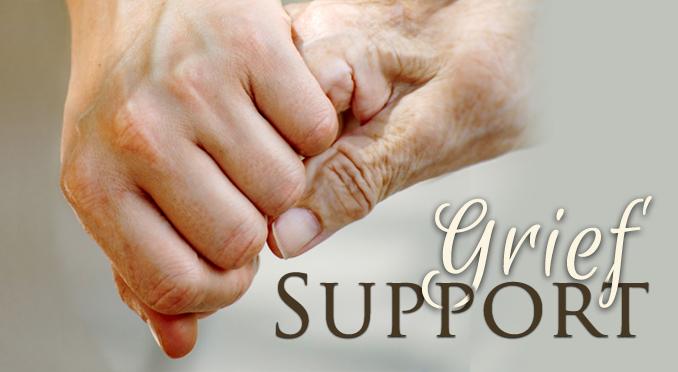Life Development and Bereavement
Sandra Graves, PhD, ATR explains how life development patterns affect how you interpret life and life experiences. At different levels of your development your understanding of what is happening around you and to you changes. These changes in your understanding impact your coping styles and your ability to cope. As she leads you through the ages and levels of development it is import to remember that the temperament with which we are born and the personality we develop determines how we handle life and death.
by Sandra Graves, PhD
Throughout life, from infancy to our older rears, we realize changes in almost everything. There are changes in the way we do things. There are changes in the way we feel. It is important for us to remember that we are not the same at 20 as we were at 10. We are quite different people at 30, 40, 50 and mature adulthood.
Of course this is common sense, but you might be surprised that you have forgotten this simple fact of life as you face your grief and the grief of those around you.
Dealing with Grief at Different Ages
We need different kinds of support when bereavement enters our lives at different stages in our lives.
This reminder of the obvious will hopefully be helpful as you work through your grief. It is important to understand what is happening to you so you will have the greatest sense of control over yourself and your life when you are under the most stress.
Young Children and Grief
Children before the age of 6 or 7 have little understanding of death as we adults know it. For them it is an abstract concept. This doesn’t mean they do not miss the loved one who has died. It does mean they do not understand that death is irreversible and final.
Young children sometimes cry, as they do when something dear to them is taken away. Sometimes they do not cry. Tears from young children (nor from you) are a measure of grief. Do not therefore, be concerned if your child or grandchild does not appear to grieve a you do.
Do watch for signs of regression, however. Regression takes many forms as in the need to be closer to a parent or other loved one, whining for attention at a greater frequency or return to behaviors you saw when the child was younger. Among the regressed behaviors are thumb sucking, holding onto a blanket for dear life, needing one special stuffed animal or doll to be able to sleep or returning to the parent’s bed at night for comfort and cuddling. Many children have nightmares or disturbing dreams that leave them frightened. They often express their fear as “bad thoughts” but may not be able to describe what they fear.
Older children
Older children are learning the rules in life, from manners to morals. They will be watching the adults around them to see how to behave when facing death and loss. It is a critical time. If you are open and expressive in your grief our children will know that they may share their feelings with you.
From about age 9 or 10 on children tend to turn to their friends for support. They are naturally less expressive with parents and more inward. Sometimes you might mistake this behavior for lack of caring. They may actually care a great deal more than they show.
Adolescence
The teenager is trying to cope with so many things! At age 13 and 14 your adolescent is trying to figure out what it means to be male or female. By 15 and 16 they are discovering each other and how to deal with feelings, emotions and intimacy. At 17 and 18 they are facing their futures as young adults, trying to make career decisions which will define their role in society.
The death of a loved one may affect many things for the adolescent:
• Identity – (Who am I?)
• How the adult world is perceived – (Is life fair?)
• Anticipation of the future – (Will it be viewed with optimism?)
Adolescents are also masters of denial. Nothing can hurt them, consequences are for others. This is perfectly normal. Depending upon the relationship to the loved one who has died, you may find your adolescent terribly depressed one minute and exuberant the next.
Support from their friends and sharing grief is important at this age. Not that sharing isn’t important at any age, but with the teenager, it is particularly crucial.
Many middle schools and high schools now have classes on death, dying and bereavement. Some schools have bereavement support groups. Such programs are highly encouraged in the schools as well as churches or civic organizations.
Early Adulthood
In the early twenties and thirties, the focus is on enjoying adult life – establishing employment, becoming self supporting, seeking marriage partners and having children. Death is supposed to be far away, except for the possibility that older grandparents or great grandparents will die.
The shock and trauma of an “early death”, the death of a young parent, a sibling, child, or friend can create what appears to be a bleak adulthood. It lessens the joys of accomplishment and dims the optimistic outlook anticipated for this time in life. Death has changed many careers as it forces an introspection more characteristic of one’s late 30’s and mid to late 40’s and early 50’s.
Into the mid to late 30’s energy is generally focused on becoming successful, providing for your families, rearing children and accumulating rewards from living. As adults, you adhere to the ethic that hard work will pay off in the long run. Death is not the pay-off anyone contemplates.
Early widowhood in these years is tremendously lonely. There are so few around who share that experience. You don’t have enough of life behind you to buffer the shock or accept the loss as part of life. You still do not expect to bury your parents or spouses and the death of your children is inconceivable.
The young adult in late 20’s and 30’s and even early 40’s needs a lot of reassurance from their peers and older adults. They need to know that there are still rewards in life worth having and to remember their relative youth in a positive light. They of course, will not replace the deceased loved one, but the meaning of that person’s life will provide fertile soil for future meaningfulness in life.
Mid-Life
The task of the late 40’s, and 50’s is to get through the “mid-life crisis” (where have I been and where am I going?) to a fuller satisfaction in daily living. Most children for this age group are in their late teens or grown. Your parents are aging and you know you will bury them soon. You begin to accept that fact, although the reality causes pain.
When you bury a parent your identity changes. You are no longer a child in your own eyes. You are the one upon whom your own children and society depend. You have become the next generation. You are at the height of your career, providing the leadership in your culture and the roles for the generation behind you.
The sense of responsibility is carried into bereavement. In some ways it provides you with much needed guidelines for coping with acute stress. You are also facing the feelings of loss that attend to aging. Your muscle tone is changing; the face in the mirror is that of your parents, not you! It is a time of decision making between cynicism and graceful acceptance.
When we are older? Where are we older? Today, one almost has to define that for themselves – the mature adult, the seniors of the community, the grandparent or great grandparent, although death is expected in your later years, you prepare for a sadness and reconciliation with life, as well as a sense of excitement in retirement and peacefulness that are hallmarks of this age. Participation in life is active and the cares and worries of being younger are not missed.
Looking Toward Life
Although this rapid run through life’s stages is highly generalized, it must be remembered that the temperament with which we are born and the personality we develop determines how we handle life and death.
Turning to relatives, friends and the community for support is a natural way to cope with grief at any age. You also need information about death and the death of a loved one; the details help you understand the reality of what has happened. You need rituals and rules to punctuate life and give you clarity.
You need to identify with the positive forces around you, the healers and the caregivers, to know that you can continue to yourself and others. And you need the laughter, the denial of pain in death which gives you hope for your own survival.
So, cry to cleanse, but when your body and mind take a breath and you forget for a while, remember that this is all a part of your healing and growing.





Comments